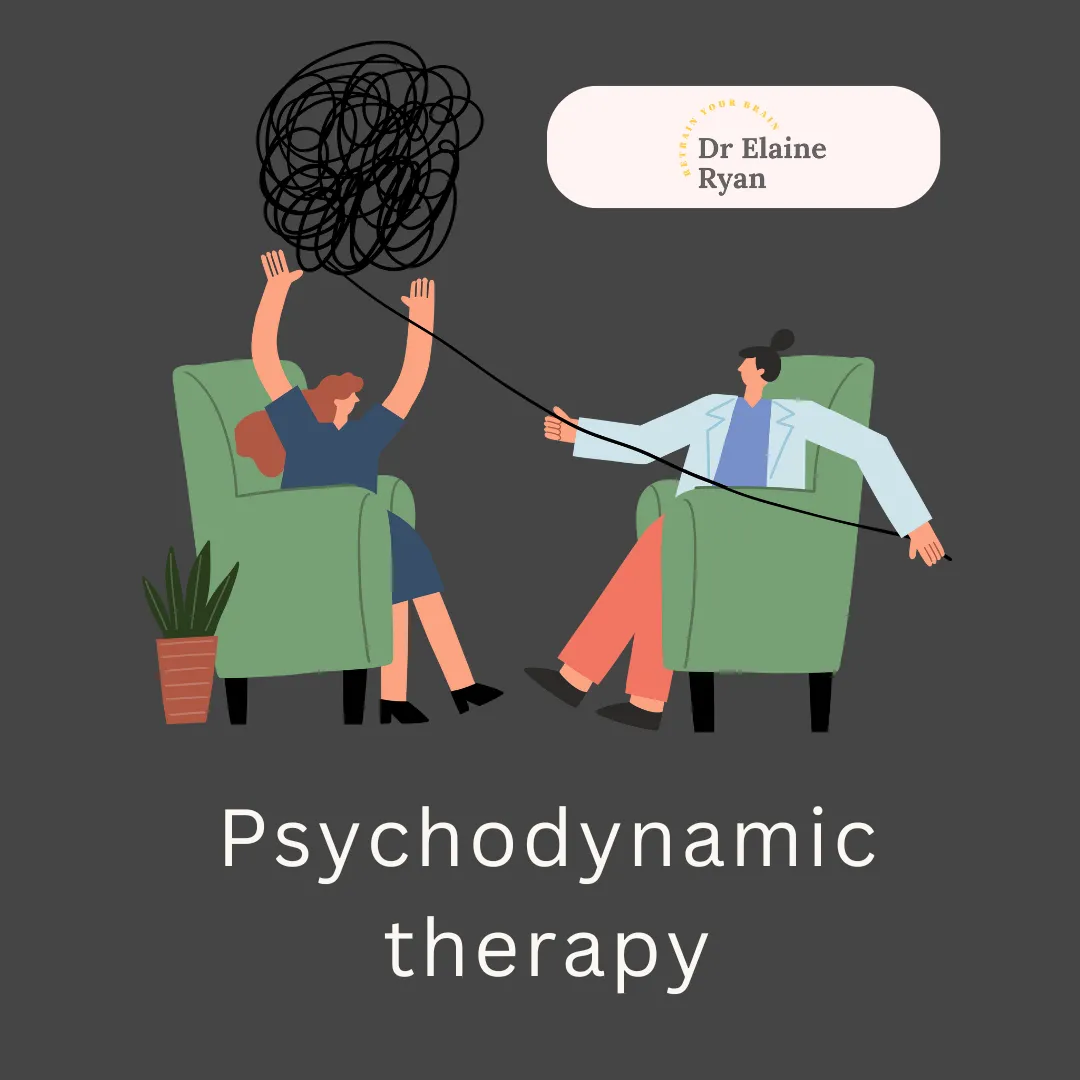About the author
Page last updated by Dr Elaine Ryan
When an individual presents for psychodynamic therapy, it is often thought that the therapy will be concerned with excavating the past to enable the client to understand their current difficulties. More recently, though, therapists note that what happened in the early years can manifest itself in what is known as the here-and-now transference. The therapeutic relationship is unique and unlike social relationships this transference phenomeon is analysed.
‘in a general sense we approach new relationships according to patterns from the past, that is we transfer feelings and attitudes from the past which may not be appropriate towards people in the present. More importantly, these represent a repetition, or a displacement, of reactions which originated regarding significant figures in early childhood’ lemma



We develop habitual types of reacting to other people which may have become part of our personality; a blueprint for particular types of relationships, and this influences how we negotiate relationships which we experience as falling within a particular category. ‘The tendency to transfer on to people feelings and attitudes inappropriate to the present is even more pronounced when there are no cues as to how we should react, in such situations, we are more likely to fall back on past experience and anticipate and then behave in the fashion of the old experience even though the present situation may in fact be quite different and warrant a different response, for example, reacting very strongly to someone and then realising s/he reminded you of someone in your past. (Lemma). Feelings may be triggered in us by particular situations which are powerful and may be hard to disentangle what belongs to past and what to present.
Psychodymanic therapy helps to unravel this, by delving into the unconscious mind and looking at unresolved conflicts.
The principles of psychodynamic therapy were first laid down by Sigmund Freud. Over the years, they have evolved and adapted to modern therapeutic practices. Today, this therapy is practiced worldwide, including in Ireland. Some principles of psychodynamic therapy you may already be familiar with as they have made it into mainstream language, One such concept is projection.
Projection involves attributing motives, feelings and/or thoughts to other people which are really our own, as they may cause us discomfort. It’s not only uncomfortable things that get projected, we also project good when we invest others with positive qualities.
In the light of transparency, I have really struggled with some aspects of psychodynamics, none more so than what we term ‘good breast, bad breast.’ Theory would argue that a young baby does not know food will come when it is hungry, it perceives an attack from a bad object, which in Klenian terms is called an unconscious fantasy. When food arrives, it is good breast. Theory would state baby cannot merge the two into one whole person.
Psychodynamic therapy is grounded in several core principles. The first is the belief in the unconscious mind’s role in shaping our behavior and emotions. This principle posits that our unconscious mind holds thoughts and feelings that we are not aware of, but which influence our actions.
Another key principle is the significance of childhood experiences. Psychodynamic therapy holds that our early life experiences, particularly those involving our primary caregivers, have a lasting impact on our psychological development.
The therapy also emphasizes the exploration of unresolved conflicts and defense mechanisms. These are thought to be sources of psychological distress that can manifest in various ways in our adult lives.
The therapeutic alliance, or the relationship between the therapist and the client, is another crucial aspect of psychodynamic therapy. This relationship serves as a safe space for the client to explore their thoughts and feelings.
Lastly, psychodynamic therapy aims to foster self-reflection and insight. Through this process, individuals can gain a deeper understanding of themselves and their relationships, leading to emotional growth and symptom relief.
Techniques and Processes in Psychodynamic Therapy
Psychodynamic therapy employs a range of techniques to facilitate self-exploration and insight. One such technique is free association, where individuals are encouraged to share thoughts and feelings as they arise, without censorship or judgment.
Another technique is dream analysis. Dreams are seen as windows into the unconscious mind, revealing hidden desires and conflicts. Therapists help individuals interpret their dreams to uncover these underlying issues.
Transference, where individuals project feelings about significant others onto the therapist, is another key process in psychodynamic therapy. It provides valuable insights into how individuals relate to others and their unconscious expectations in relationships.
Countertransference, the therapist’s emotional response to the individual, is also crucial. It can reveal the therapist’s unconscious biases and help them maintain an objective, empathetic stance.
Overall, these techniques and processes aim to foster self-understanding, resolve internal conflicts, and promote emotional growth.
Finding a Qualified Psychodynamic Therapist in Ireland
Finding a qualified psychodynamic therapist in Ireland involves careful research. It’s important to consider the therapist’s qualifications, experience, and areas of expertise.
Potential clients can use online directories or seek recommendations from health professionals. It’s crucial to find a therapist with whom one feels comfortable and safe.
References
Alessandra Lemma Introduction to the Practice of Psychoanalytic Psychotherapy, 2nd Edition
